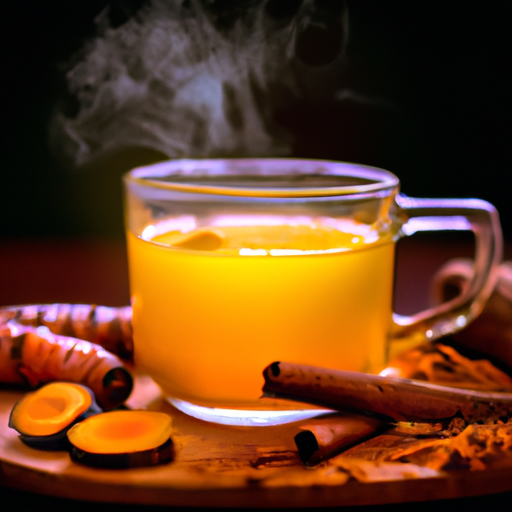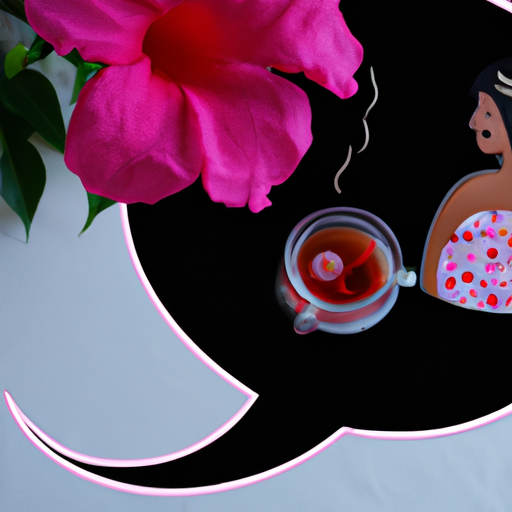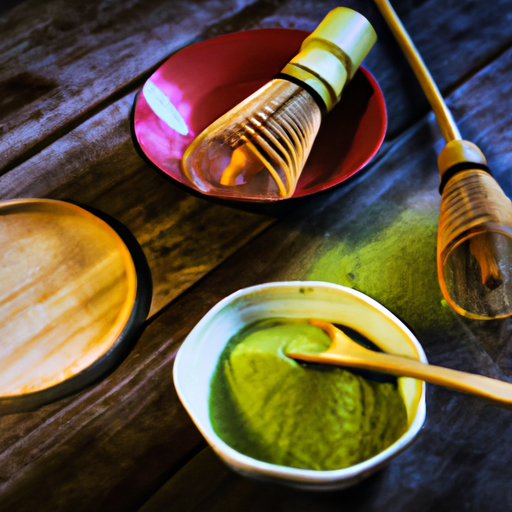Matcha, the exquisite powdered green tea, has been rising in popularity globally due to its distinctive taste and multiple health advantages. As someone who is passionate about matcha, I’ve experimented with different qualities and producers of matcha, ranging from culinary grade to ceremonial grade, and spanning from Japan to China. Nonetheless, identifying a trustworthy place to buy matcha can prove to be challenging, particularly for newcomers to the matcha scene.
Luckily, there are several options to purchase matcha, including local health food stores, online retailers, and specialty tea shops. Each option has its advantages and disadvantages, such as price, quality, and convenience.
In this article, I will guide you through the world of matcha and provide you with tips and recommendations on where to purchase matcha based on grades, country of origin, organic vs. conventional, packaging, and price. So, let’s dive into the world of matcha and discover the best places to purchase this magnificent green tea powder.
Key Takeaways
- Reliable sources to purchase matcha include local health food stores, online retailers, and specialty tea shops.
- Quality makes a significant difference in both taste and health benefits of matcha.
- Matcha can come from various countries such as Japan, China, and Korea, each with its unique flavor profile.
- The best packaging option for you will depend on your personal preferences and storage capabilities.
Benefits of Matcha
You’ll love how matcha can boost your energy, improve your focus, and concentration, and provide you with an array of health benefits! This finely ground green tea powder has been consumed for centuries in Japan and is now becoming increasingly popular worldwide.
Matcha is not only a delicious beverage but also a powerhouse of nutrients. It is loaded with antioxidants, vitamins, and minerals that can improve your overall health. One of the major health benefits of matcha is its high concentration of antioxidants, which can help protect your body against damage from free radicals.
Matcha also contains a unique amino acid called L-theanine, which has been shown to promote relaxation and reduce stress. This amino acid is responsible for matcha’s ability to provide a calm focus, rather than the jittery energy boost that coffee can sometimes cause.
In addition to its health benefits, matcha has a wide range of culinary uses. It can be used as a natural food coloring, added to smoothies, baked goods, and even savory dishes like soups and sauces. Its unique flavor and vibrant green color make it a versatile ingredient that can add a pop of color and flavor to any dish.
Now that you know the health benefits and culinary uses of matcha, let’s explore where you can purchase this amazing superfood.
Local Health Food Stores
If you’re on the hunt for a healthy and refreshing drink, there’s no better place to find it than at your local health food store. Imagine walking down the aisles and spotting vibrant green powders that catch your eye, beckoning you to try them out.
Matcha, a fine powdered green tea, is a popular beverage that’s becoming increasingly popular in health food stores worldwide. Local sourcing is a huge factor when it comes to purchasing matcha. Health food stores often carry matcha that’s locally sourced, which ensures that the product is fresh and hasn’t been sitting on a shelf for an extended period of time. Additionally, this also supports local businesses and the environment by reducing carbon emissions from transporting the product long distances.
Availability is another benefit of purchasing matcha from a local health food store. These stores often have a wide range of matcha products, including organic and ceremonial grade matcha. They also carry a variety of brands and sizes, so you can choose the perfect matcha to fit your needs.
Purchasing matcha from a local health food store is a great way to ensure that you’re getting a fresh and high-quality product, while also supporting local businesses. However, if your local health food store doesn’t carry matcha or if you’re unable to find the specific type of matcha you’re looking for, there are plenty of online retailers that offer a wide selection of matcha products.
Online Retailers
As someone who enjoys the benefits of matcha, I’ve found that shopping online for this tea offers a wide variety of options that aren’t always available in local stores.
From ceremonial to culinary grade, there are countless brands and flavors to choose from.
However, it’s important to keep in mind that shipping and handling fees can add up quickly, so it’s worth looking for retailers that offer free shipping or discounts on bulk orders.
Wide variety of options
With so many options available, it’s easy to get lost in a sea of matcha choices when looking to purchase this trendy beverage. Matcha quality can vary greatly depending on where you purchase it from, so it’s important to do your research beforehand. Some online retailers offer a wide variety of matcha flavors, such as fruity blends or even chocolate-infused options.
To help you navigate the world of matcha, here is a table with some popular online retailers and their matcha offerings:
| Online Retailer | Matcha Quality | Different Matcha Flavors |
|---|---|---|
| Matchaful | Ceremonial grade | Classic, blueberry, mint, and more |
| Ippodo Tea Co. | High-quality | Ummon-no-mukashi, Kan-no-shiro, and more |
| Mizuba Tea Co. | Organic, ceremonial grade | Classic, mint, ginger, and more |
| Breakaway Matcha | Artisanal, high-quality | Grand Cru, Limited Reserve, and more |
As you can see, there are many options available to suit different tastes and preferences. However, it’s important to keep in mind that shipping and handling fees may vary depending on the retailer.
Shipping and handling fees
When considering where to buy your matcha, keep in mind that shipping and handling fees may vary between retailers. Comparison shopping is key in finding the best deal for your budget. Some retailers may offer free shipping with a minimum purchase, while others may charge a flat rate or calculate shipping based on weight and distance.
It’s important to read the retailer’s shipping policies and fees before making a purchase to avoid any surprises at checkout. Another factor to consider is delivery times. Some retailers may offer expedited shipping for an additional fee, while others may have longer processing times before shipping. If you need your matcha by a certain date, be sure to check the estimated delivery time and factor in processing time as well.
It may be worth paying a little extra for faster shipping if it means receiving your matcha in time for a special occasion or event. With these factors in mind, you can find a retailer that offers the best shipping and handling options for your needs.
When it comes to specialty tea shops, many offer in-store pickup options to avoid shipping fees altogether. This can be a convenient option if you live near a specialty tea shop or have plans to visit one in the near future. However, if you don’t have access to a local specialty tea shop, online retailers may still be your best option.
Specialty Tea Shops
When it comes to finding high-quality matcha, specialty tea shops are a great resource. These shops often offer expert advice on the different types of matcha and how to prepare it for maximum flavor and health benefits.
However, it’s important to note that specialty tea shops typically have higher prices than online retailers, so be prepared to pay a premium for their expertise and selection.
Expert advice
For those seeking expert advice on where to purchase quality matcha, it’s best to consult with a knowledgeable tea specialist. These experts can provide valuable insight into the different matcha preparation methods and recommend brands that are known for their high quality and authentic taste.
When speaking with a tea specialist, it’s important to ask about the origin and processing of the matcha, as well as any certifications or awards the brand may have received. They may also be able to provide tasting samples or suggest recipes for incorporating matcha into your daily routine.
While purchasing matcha from a specialty tea shop may come at a higher price point, the expertise and guidance provided by these professionals can ensure you are getting the best possible product for your needs.
Higher prices
Despite the higher cost, investing in quality matcha is like treating your taste buds to a luxurious spa day. When it comes to matcha, quality makes a significant difference in both taste and health benefits. It’s essential to consider matcha quality before making a purchase decision. Here are a few reasons why investing in high-quality matcha is worth the price comparison:
-
The color of the matcha speaks for itself. High-quality matcha is bright green, while low-quality matcha has a dull, yellowish color. The vibrant color indicates that the matcha was grown in shade, without direct sunlight. The shade-grown conditions increase the chlorophyll content, making the matcha richer in nutrients and flavor.
-
The texture of the matcha is smoother and silkier. Low-quality matcha often feels grainy or gritty, indicating that the matcha was not ground finely enough. High-quality matcha is ground to a fine powder, allowing for a velvety texture that dissolves in water quickly.
-
The taste of high-quality matcha is creamier, sweeter, and less bitter. Low-quality matcha has a grassy, astringent taste, indicating that the matcha is made from older leaves or contains fillers. High-quality matcha is made from young tea leaves, resulting in a mellower flavor with no harsh aftertaste.
Investing in high-quality matcha may seem like an extra cost, but it’s worth the price comparison for the superior taste and health benefits. Understanding matcha quality is an important step in purchasing the best matcha for your needs. In the next section, we’ll delve into the different grades of matcha and how to choose the right one for you.
Grades of Matcha
The highest grade of matcha is ceremonial grade. It’s like a vibrant, emerald green powder that exudes a rich, smooth flavor. It’s made from the youngest tea leaves, which are carefully hand-picked and stone-ground to create a fine, silky texture. Ceremonial grade matcha is often used in traditional Japanese tea ceremonies, where it’s served with sweets and enjoyed with great reverence.
On the other hand, culinary grade matcha is a more affordable option that’s often used in cooking and baking. It’s made from older tea leaves and has a more bitter taste, making it less suitable for drinking on its own. However, it’s still a great ingredient for adding a vibrant green color and matcha flavor to a variety of recipes.
When shopping for matcha, it’s important to look for authenticity vs. imitation. Some lower quality matcha powders may be mixed with other ingredients or may not be made from the proper tea leaves. Look for a trusted source that specializes in matcha to ensure you’re getting the real thing.
Now that we’ve covered the different grades of matcha, let’s move on to discussing the country of origin and how it affects the taste and quality of the matcha.
Country of Origin
Did you know that where the matcha is grown can greatly impact its flavor and quality? Matcha can come from various countries such as Japan, China, and Korea, each with its unique flavor profile.
Japan is most commonly known for its matcha production, and it is regarded as the gold standard in the industry. Matcha from Japan is usually made from tencha leaves, which are grown in the shade for up to a month before harvesting. This production method results in a sweet, umami flavor profile with a smooth finish.
China is another country that produces matcha, but it is usually not as high quality as the matcha from Japan. Matcha from China is often made from the tea plant’s leaves, which are not grown in the shade. This production method results in a more bitter taste profile with a grainy texture.
Korea is also known for its matcha, but it is not as well known in the market. Korean matcha is usually made from powdered green tea leaves, which are grown in a similar way to Japanese matcha, but the leaves are usually roasted, giving it a slightly nutty flavor profile.
Knowing the origin options of matcha is crucial for understanding and appreciating its cultural significance. Japanese matcha, in particular, has a rich cultural history dating back to the 12th century. It was used in traditional tea ceremonies, which were rooted in Zen Buddhism and aimed to promote tranquility and mindfulness. Matcha is not just a drink; it is a cultural experience that has been passed down from generation to generation.
Understanding the origin options and cultural significance of matcha can help you appreciate and enjoy it even more.
Now that we’ve discussed the country of origin, the next step is to understand the difference between organic and conventional matcha.
Organic vs. Conventional
Choosing organic matcha can give you peace of mind and a sense of responsibility towards your health and the environment. Organic matcha is grown without the use of harmful pesticides and chemicals, ensuring that what you’re consuming is free from any harmful substances. Additionally, organic farming practices are better for the environment as they prioritize soil health, biodiversity, and conservation efforts.
If taste is a concern, you may be wondering if there is a difference between organic and conventional matcha. While there might be slight differences in taste, it ultimately comes down to personal preference. However, many people find that organic matcha has a smoother and more mellow taste compared to conventional matcha, which can sometimes have a slightly bitter aftertaste.
When it comes to purchasing matcha, it’s important to consider your own values and priorities. If you prioritize your health and the environment, then choosing organic matcha is the way to go. But if taste is your main concern, then it’s worth trying both organic and conventional matcha to see which one you prefer. Regardless of which one you choose, make sure to look for high-quality matcha from reputable sources.
When it comes to packaging, there are a few things to keep in mind to ensure that your matcha stays fresh and flavorful.
Packaging
When it comes to keeping your matcha fresh and full of flavor, your packaging choice can make all the difference. The most common packaging options for matcha are metal tins, resealable bags, and glass jars.
Each packaging option has its own benefits and drawbacks, so it’s important to choose the one that best suits your needs. Metal tins are a popular packaging option for matcha because they are durable and help to protect the tea from light and moisture. However, metal tins can be bulky and difficult to store.
Resealable bags are a more eco-friendly option and are often used by tea companies that prioritize sustainability. These bags are also more space-efficient than metal tins, making them a great option for those with limited storage space.
Glass jars are another popular option, as they allow you to see the matcha and can be reused once the tea is gone. However, glass jars can be heavy and are more prone to breakage. It’s important to consider your packaging choice when purchasing matcha, as it can have a significant impact on the tea’s shelf life.
Matcha should be stored in an airtight container away from light and moisture to maintain its freshness. If you choose to purchase matcha in a resealable bag, be sure to transfer the tea to an airtight container once it’s opened to ensure its longevity.
Ultimately, the best packaging option for you will depend on your personal preferences and storage capabilities. With that being said, it’s important to keep in mind that the quality and freshness of your matcha should always be your top priority – even if it means sacrificing a little bit of convenience.
When it comes to purchasing matcha, the packaging options and shelf life are important factors to consider – but so is the price. In the next section, we’ll explore the different price points of matcha and what you can expect to pay for high-quality tea.
Price
When it comes to purchasing matcha, price is definitely a factor to consider. As someone who enjoys matcha on a regular basis, I’ve come across a range of options with varying price points.
On the more budget-friendly end, you can find matcha for as little as a few dollars per ounce. However, there are also higher-end options that can cost upwards of $30 or more per ounce.
Budget-friendly options
If you’re looking to save some cash, you can’t go wrong with checking out some of the more affordable matcha options out there. While it’s true that you may have to compromise on some aspects such as matcha quality or taste preferences, there are still plenty of budget-friendly options that can satisfy your matcha cravings without breaking the bank.
Here are some of the best budget-friendly matcha options that I’ve tried and tested:
-
Jade Leaf Matcha: This brand offers a variety of matcha grades at affordable prices, making it a great option for those who are just starting out with matcha or looking for a more affordable option.
-
Matcha Konomi: This brand offers high-quality matcha at reasonable prices, making it a great option for those who want to enjoy the benefits of premium matcha without spending a fortune.
-
Encha Matcha: This brand offers organic, high-quality matcha at affordable prices, making it a great option for those who want to enjoy the health benefits of matcha without breaking the bank.
While these budget-friendly options may not be as high-end as some of the more expensive matcha brands out there, they are still a great option for those who want to enjoy the benefits of matcha without spending a fortune. However, if you’re looking for a more premium matcha experience, there are also plenty of higher-end options available.
Higher-end options
For those looking to indulge in a luxurious matcha experience, there are plenty of higher-end options available that are sure to impress even the most discerning palates.
When it comes to matcha quality, luxury brands are the way to go. These brands source their matcha leaves from the highest quality tea farms in Japan and undergo rigorous quality control to ensure that the final product is nothing short of exceptional.
One such luxury brand is Ippodo Tea, which has been producing matcha for over 300 years. Their matcha is made using only the youngest and most tender tea leaves, which are grown in the shade for several weeks before being hand-picked and stone-ground.
The result is a vibrant green powder with a smooth and creamy texture, and a flavor that is both rich and complex. While their matcha is certainly on the pricier side, the quality and authenticity of their product is well worth the investment for those looking to elevate their matcha experience.
Frequently Asked Questions
How do I prepare matcha at home?
To prepare matcha at home, I first gather my matcha tools: a bamboo whisk, a matcha bowl, and a measuring spoon.
I then sift 1-2 teaspoons of matcha powder into the bowl to ensure there are no clumps.
Next, I add hot water (not boiling) to the bowl, about 2-3 ounces depending on personal preference, and whisk vigorously in a zigzag motion until the matcha is frothy and smooth.
There are many matcha recipes that can be experimented with, such as adding honey or vanilla extract for sweetness, or using almond milk for a dairy-free option.
With a little practice and experimentation, preparing matcha at home can be a delightful and rewarding experience.
Can I use matcha in recipes other than tea?
When it comes to matcha, it’s not just for tea anymore! Matcha powder is versatile and can be used in a variety of recipes, including desserts. From matcha ice cream to matcha cheesecake, the possibilities are endless.
I love experimenting with matcha recipes and finding new ways to incorporate its unique flavor into my cooking. Whether you’re a seasoned baker or just starting out, there are plenty of matcha dessert recipes available online that are sure to impress.
So why not try something new and add some matcha to your next baking adventure? You won’t be disappointed!
What are the health benefits of matcha compared to other types of tea?
When it comes to health benefits, matcha is in a league of its own compared to other types of tea. Matcha is made from the whole green tea leaf, which means it contains more nutrients, antioxidants, and caffeine than steeped tea.
Matcha is also known for its high concentration of L-theanine, an amino acid that promotes relaxation and reduces stress. Additionally, matcha has been linked to improved brain function, weight loss, and lower risk of chronic diseases such as heart disease and diabetes.
While other types of tea may have some health benefits, matcha’s unique properties make it a standout choice for those looking to improve their overall health and well-being.
Is there a difference in taste between different grades of matcha?
Wow, let me tell you, the taste differences between different quality grades of matcha are mind-blowing! It’s like comparing a cheap instant coffee to a high-end espresso – the difference is that significant.
The lower quality matcha tends to have a bitter taste and a grainy texture, while the higher quality matcha is smooth and velvety with a more delicate and nuanced flavor. The color is also a key indicator of quality – the higher the grade, the brighter and richer the green color.
So, if you really want to experience the full potential of matcha, I highly recommend investing in a higher quality grade. It’s worth it!
How much matcha should I consume per day?
I usually consume about one teaspoon of matcha per day, which is equivalent to roughly 2-3 cups. This amount is considered safe and provides enough antioxidants and nutrients to reap the health benefits of matcha, such as improved focus, energy, and metabolism.
However, it’s important to keep in mind that matcha contains caffeine, so it’s best to avoid consuming it in the late afternoon or evening to prevent disrupting sleep. Additionally, matcha has been touted as a weight loss aid, but it’s important to remember that it’s not a magic solution and should be combined with a balanced diet and exercise regimen.
Overall, incorporating matcha into your daily routine can have numerous health benefits, but it’s important to consume it in moderation and from a reputable source to ensure the quality and safety of the product.
Conclusion
So there you have it, my fellow matcha enthusiasts! Whether you’re looking to boost your energy levels, improve your concentration, or simply enjoy a delicious cup of tea, there are plenty of options out there for purchasing high-quality matcha.
From your local health food store to online retailers and specialty tea shops, the possibilities are endless. When it comes to selecting the right matcha for you, be sure to consider factors such as grade, country of origin, and packaging.
And while organic and conventional options are both available, it’s always a good idea to opt for the former if possible. Of course, price is also a consideration, but remember that when it comes to matcha, you really do get what you pay for.
In conclusion, whether you’re a seasoned matcha drinker or a curious newcomer, there’s no better time than now to explore the world of this amazing tea. So go forth, my friends, and enjoy all the benefits that matcha has to offer.
As the saying goes, ‘A cup of matcha a day keeps the doctor away!’…and helps you stay energized and focused throughout the day.









